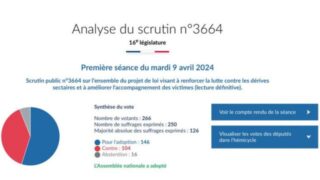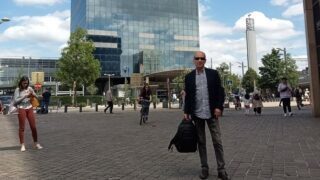Offering the accounts of “apostates” as evidence, anti-cultists insist that “cults” are not “genuine” religions and they gain converts through “brainwashing.”
by Massimo Introvigne
Article 6 of 7. Read article 1, article 2, article 3, article 4, and article 5.


In the 1970s, sociologists developed the new concept of “moral panic” to explain how some social problems become overconstructed and generate exaggerated fears. Moral panics were defined as socially constructed social problems characterized by a reaction, both in media representation and in political forums, out of proportion to the actual threat. Two additional features of moral panics were mentioned. First, social problems existing from decades are reconstructed by media and public narratives as “new” or as the subject of a recent alleged dramatic increase. Second, their prevalence is misrepresented through folk statistics that, although not confirmed by scholarly studies, are repeated from media to media and may inspire political measures. A good example of folk statistics in our fields are exaggerated and ill-founded “statistics” about cases of sexual abuses among the Jehovah’s Witnesses, aimed at creating a moral panic around the issue.
According to Philip Jenkins, “the panic reaction does not occur because of any rational assessment of the scale of a particular menace.” Rather, it is “a result of ill-defined fears that eventually find a dramatic and oversimplified focus in one incident or stereotype, which then provides a visible symbol for discussion and debate” (Pedophiles and Priests: Anatomy of a Contemporary Crisis, New York and Oxford: Oxford University Press, 1996, 170). Jenkins emphasizes the role in the creation and management of moral panics of “moral entrepreneurs,” who have vested interests in perpetuating the specific fears.
“Cults” have often been studied as quintessential targets of moral panics. According, again, to Jenkins, “cults perform a convenient integrative function by providing a common enemy, a ‘dangerous outsider’ against which the mainstream can unite and reassert its shared standards and beliefs. Depending on the legal and cultural environment of a given society, the tension between cults and mainstream community might result in active persecution or it can take the form of ostracism and negative stereotyping” (Jenkins, Pedophiles and Priests, 158). Anti-cultists act as moral entrepreneurs, and the religious minorities they target as “cults” are presented, rather than as legitimate social agents (let alone social resources), as a social problem and the subject matter of a moral panic.


As mentioned earlier, moral panics are never without some sort of objective basis. Nobody seriously denies that some religious organizations have been or are today guilty of criminal activities, from obvious cases of frauds up to pedophile crimes by members of the clergy and the mass suicides and homicides of the Order of the Solar Temple. We are told by critics of “cults” that misguided academics are “cult apologists” prepared to deny that criminal or other illegal activities are ever perpetrated by new religious movements or religious organizations in general. These “cult apologists” would be rather strange characters, but if they exist at all I have never met one. I have introduced myself the category of “criminal religious movements.” No scholar denies that there are criminal organizations and individuals who claim to operate in the name of religion, just as others commit crimes in the name of politics or economy.
The real problem, however, is prevalence, not existence. While it is obvious that members of some religious organizations in some circumstances commit crimes, there is no evidence that members of “all” or “most” groups labeled by their opponents as “cults” are guilty of illegal activities. There is also no evidence that crimes are committed more often by the personnel of new religious movements than by the clergy or members of traditional religions. On the contrary, the studies about sexual abuse and pedophilia by the late sociologist Anson D. Shupe (1948–2015) demonstrated that these plagues are more prevalent within mainline religions than within groups labeled as “cults.” While some of the latter, including the Japanese movement Aum Shinrikyo, were involved in terrorist attacks, their crimes pale in comparison with those committed by using or misusing the name of mainline religions such as Islam.
Moral panics start with a basis in reality, but escalate through exaggeration and folk statistics when comments appropriate for one or more particular incidents are generalized. It is in escalating, not in creating, the moral panic that moral entrepreneurs with vested interests, in our case the anti-cultists, enter the picture.
The anti-cult ideology proceeds through a four-stage model. First, the model claims that some minorities are not really “religions” but something else: “cults,” or criminal associations. This is not a particularly new argument. In July 1877, anti-Mormon author John Hanson Beadle (1840–1897) wrote in the Scribner’s Monthly that “Americans have but one native religion [Mormonism] and that one is the sole apparent exception to the American rule of universal toleration. (…) Of this anomaly two explanations are offered: one, that Americans are not really a tolerant people and that what is called toleration is only such toward our common Protestantism, or more common Christianity; the other, than something peculiar to Mormonism takes it out of the sphere of religion.”
Beadle’s astute observation effectively blackmailed American readers into concluding that Mormonism was not a religion. In fact, readers were presumably committed both to religious tolerance and to the idea that the U.S. were, by definition, the country of religious liberty. In civilizations where religious liberty is recognized as a value and constitutionally protected, the only way to discriminate against a religious minority is to argue that it is not religious at all.


Similarly, we can find in anti-Jehovah’s-Witnesses literature the claim that what is called “the Watchtower” is not really a religious organization but a multinational “corporation” handling huge sums of money. The criticism omits to mention that, in order to function, all forms of organized religion need funds and financial structures, but is typical of the first pillar of the anti-cult ideology, which tries to remove the “cults” from the sphere or religion.
Second, the model posits that what distinguishes genuine religions from groups falsely claiming their right to the religious label is something called brainwashing, mental manipulation, or mind control. Bitter Winter devoted a series to brainwashing and its criticism by mainline scholars, to which I would refer the interested readers.
Third, since brainwashing theories are the object of considerable scholarly criticism, the model requires as a third step discrimination among sources and narratives. Anti-cultists make little or no use of mainline scholarly sources. Instead, they use the accounts of those normally defined by social scientists as “apostates.” The term is not synonymous with “ex-members.” “Apostates” are the former members converted into active opponents of the group they have left. Although many such ex-members resent being called “apostates” the term is technical, not derogatory, and has been used by sociologists of religion for decades. Bitter Winter also published a series on “apostates,” explaining that not all ex-members, and in fact only a minority of them, turn into public opponents of the groups they left, i.e., into “apostates.”
Objections that “apostates” are not necessarily representative and reliable are met by the fourth stage of the anti-cult model. “Cult,” it is argued, are not religions. They are not because they use “brainwashing,” while religions are by definition joined out of free will. We know that they use “brainwashing” because we rely on the testimony of “victims” (i.e., “apostates”). And we know that “apostates” are representative of the groups’ membership, or at least former membership, because they are screened and selected by private, reliable watchdog organizations, i.e., the so-called anti-cult organizations. Anti-cult organizations, we are told, are more reliable than academics because the former, unlike the latter, have a “practical” experience and work with “victims.” But in fact anti-cult organizations are not interested in objectivity. Their job is to apply the anti-cult ideology to all the groups they have designated as “cults.”
This four-stage model plays an important role in perpetuating the moral panics, and depicting false images of many new religious movements. Ultimately, since we are asked to believe that only those witnesses promoted by the anti-cult movements are reliable, we can conclude that the ideology of anti-cultism wants to persuade us that a “cult” is a “cult” because it is designated as such by the anti-cultists.








